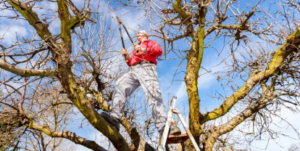Tree loppers are used to cut dead branches and limbs with ease. Most models feature handles with extended handles for greater leverage when cutting, while some models even come equipped with gear systems or compound lever systems to multiply force for increased cutting effectiveness.
Quality tree loppers Adelaide Hills will feature blades that provide clean, consistent cuts with every use, lightweight construction to reduce strain on hands and arms, comfortable handles with ergonomic designs for user control, and an automatic ratchet mechanism to make the experience seamless and seamless.
Stainless steel
 At first glance, tree loppers Adelaide Hills appear similar, with two handles that open wide to manipulate scissor-like blades. But there are differences among models depending on what types of stems and branches they’re designed to cut; anvil blade loppers work better for cutting dry, brittle or dead stems as they snap them in half; bypass loppers feature two sharpened blades that pass over each other like scissors which make for quick trimming soft green growth.
At first glance, tree loppers Adelaide Hills appear similar, with two handles that open wide to manipulate scissor-like blades. But there are differences among models depending on what types of stems and branches they’re designed to cut; anvil blade loppers work better for cutting dry, brittle or dead stems as they snap them in half; bypass loppers feature two sharpened blades that pass over each other like scissors which make for quick trimming soft green growth.
Additionally, the blade material and ergonomics of a set are vital considerations. Stainless steel is the go-to lopper material, as it resists rust and stains more efficiently than carbon steel. Coated blades may also be available but require extra care as sap residue must be cleaned regularly after each use. Longer models typically offer more reach while being easier on arms due to being heavier than shorter versions.
Carbon steel
At first glance, loppers all appear relatively similar; each features two handles that open wide to manipulate its scissor-like blades. However, models vary significantly; finding one suitable for your intended use, arm strength, and budget depends heavily on each factor.
Manual loppers are perfect for trimming narrow branches as they rely on your strength for cutting force while ratcheting loppers allow you to reopen their handles and increase cutting pressure without releasing the branch. This feature can also come in handy when dealing with thicker branches. Furthermore, some models come equipped with one or more pivoting arms at the fulcrum between blades to increase cutting power further.
Many loppers feature extendable handles that can be adjusted from 26-40 inches long, making them great for pruning harder-to-reach branches; they’re often heavier than non-extendable loppers. Some come equipped with compound action capabilities that can cut through 2-inch-thick branches.
Coated blades
Lopper blades come in various shapes and sizes, with some featuring Teflon or titanium coating to reduce friction for easier cutting and resist rust and sap residue build-up. If you purchase such a lopper, clean its coated blades after each use to avoid rusting.
Loppers offer greater reach than pruning shears; some models even feature telescoping handles, which extend further for increased leverage when cutting thicker branches, making the task less strenuous for those with limited strength or who must reach hard-to-reach locations. These tools make great additions to any toolbox!
Length
This aluminium lopper gives clean cuts without sap accumulation with its non-stick coating and powerful gear mechanism. Plus, its soft grips ensure comfort over longer use – while gardening gloves will safeguard your hands from further wear and tear.
Stainless steel blades resist rust and staining, require less maintenance than carbon steel ones, and offer greater cutting capacity due to greater flexibility. However, the blades can rust if left without regular oiling and maintenance.
A lingering tree stump in your yard can be a real eyesore, and it may also interfere with landscaping, gardening and lawn maintenance. Aside from the aesthetics, a dead stump and roots can also become an ideal location for invasive weeds to grow and spread. It’s important to remove a stump as soon as you can to prevent further growth and protect your property. There are several ways to do this, including digging it out by hand, burning it, using a stump grinder or chemically removing the stump with Epsom salt.
